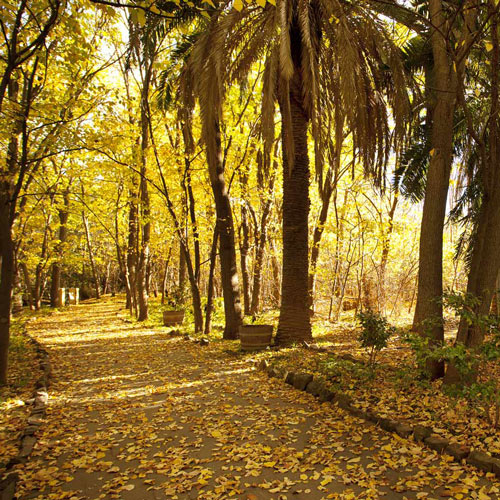"...On Sunday afternoons crowds of visitors come from the surrounding district to see 'Seppeltsfield.' They drive up to the fence, tie up their horse, and leisurely stroll around the place. The buildings are gazed at, the garden peeped into, and everything that can be seen is looked at from the outside..."
Chronicle Adelaide 2nd April 1904

The gardens of Seppeltsfield contain an array of botanic species and venturing through the estate is welcomed.
The most notable feature and iconic to the scenery of the Barossa Valley is the Avenue of Palms – a 5 kilometre trail of Canary Island Date Palms (Phoenix canariensis), planted by Seppeltsfield workers during the Great Depression. Over 2000 palms now line the sides of Seppeltsfield Road, providing for one of Australia’s most visually spectacular driving avenues.
Within ‘village central’ itself, a citrus-lined courtyard and cascading water feature serves as the welcome point to the Seppeltsfield cellar door. Here, an alfresco dining space for FINO Seppeltsfield restaurant also exists – propagated feature Palms and Crepe Myrtle (Lagerstroemia) creating a semi-shaded amphitheatre.
Planted by the Seppelt family in circa 1900, another highlight within the estate itself is Elm Walk. The walkway crosses the banks of Greenock Creek and is a tranquil hideaway in the heights of a Barossan Summer.
Towering Eucalyptus, Pines and Poplars are also in abundance, shading various local shrubbery species and providing habitat for birdlife such as Kookaburras (Dacelo novaeguineae), Magpies (Cracticus tibicen) and Eastern Rosellas (Platycercus eximius). On occasion, Eastern Grey Kangaroos (Macropus giganteus) can be seen, most commonly in surrounding vineyards during dawn or dusk periods.

Woven through the estate’s grounds is a blend of 19th and 20th century architecture, juxtaposed against the contemporary influences of recently redeveloped buildings.
Not to be missed are the panoramic views from the Greco-Roman inspired Seppelt Family Mausoleum. Accessible via Seppeltsfield Road to the East of the estate, a steep climb is certainly worth the effort.
Within the estate, twelve South Australian State Heritage listed buildings including the Seppelt Family Homestead (1851), Blending Cellars (1867-1878), the Dining Hall (1870-1890), Winemakers Terrace & Chimney (1877) and Laboratory (1945) are available to see – local slate, bluestone and ironstone being major structural features.
The contemporary architecture of Max Pritchard and Grieve Gillett can be contemplated in the redeveloped Clydesdale Stables (1850) and Bottling Hall (1900), now the respective homes of JamFactory Art & Design Studios and the Seppeltsfield Cellar Door.